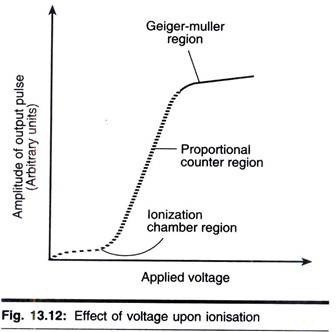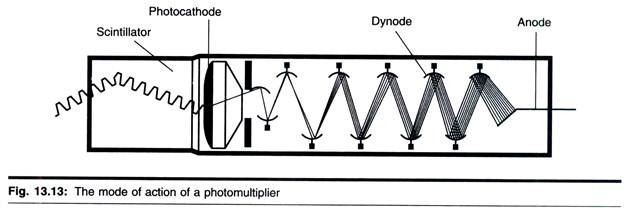In this article we will discuss about:- 1. Origin and Development of Visceral Muscle 2. Histology of Visceral Muscle 3. Distribution 4. Fine Structure 5. Blood Vessels, Lymphatics and Nerves.
Origin and Development of Visceral Muscle:
The smooth muscles are mesenchymal in origin. The mesenchymal cells first start to stretch out. The nucleus becomes elongated, and myofilaments appear in the cytoplasm. In the case of blood vessels, the mesenchymal cells are arranged along the wall of the tube at regular intervals and developed in the same fashion as already mentioned and ultimately forming the continuous circular and longitudinal muscular layers of blood vessels.
It is claimed by some workers that the new smooth muscle fibres that appear in the uterus during pregnancy are originated from the undifferentiated connective tissue. The smooth muscle fibres can increase in size and also in bulk during physiological requirement (e.g., uterus in pregnancy) and in pathological stimuli (e.g., arterioles in hypertension). There is also evidence that smooth muscle cells themselves can divide by mitosis.
Histology of Visceral Muscle:
The smooth muscle fibres are elongated, fusiform (spindle-shaped) with a wider central portion where the single nucleus is situated (Fig. 1.72). Both the ends of the fibres are tapering towards the periphery. The average length is about 0.2 mm which varies much (20µ at the wall of the blood vessels to 500 µ in the pregnant women’s uterus) and the width is about 6µ at the central widest portion.
The cells of the smooth muscles are so arranged that the thick-middle portion of one is juxtaposed by the thin-end portion of the other. So in the transverse section, there will have rounded or irregularly polygonal profiles of various sizes (1.0 µ to several µ in diameter), only the largest profiles will demonstrate the centrally placed nucleus. The nucleus is elongated, oval.
Delicate uniform chromatin network is present in the nucleoplasm. There are two or more nucleoli. In ordinary preparation, the sarcoplasm is quite homogeneous. But in special preparations (e.g., macerated with acid), fine longitudinal striations may be demonstrated running full length of the fibre.
These are the myofibrils and are interpreted as the contractile material of the smooth muscle. They are doubly refracted but have got no isotropic (I-band) and anisotropic (A-band) regions, i.e., no cross-striation which is the characteristic feature of the other two varieties of muscles (skeletal and cardiac).
Sarcoplasmic organelles are few and are grouped near the nucleus. A small Golgi apparatus is also present near the nucleus. Sarcoplasm contains a considerable amount of glycogen. The surface of the smooth muscle has a thick basal lamina (similar to the basement membrane of the epithelium). The sarcolemma (the plasma membrane) is surrounded by an extraneous glycoprotein coat similar to the basement membrane of epithelial cells.
Distribution of Visceral Muscle:
The visceral muscle is also known as the plain, non-striated, smooth involuntary muscle. It is called non-striated because it has got no cross-striations. The contraction of this muscle is not controlled by volition or will.
These muscles are present in all hollow viscera, e.g., gastro-intestinal (GI.) tract, ducts of the glands, blood vessels, respiratory, urogenital and lymphatic systems of the body. These are also present in the dermis, ciliary body and iris of the eye.
The automatic contraction of the smooth muscle fibres (G.I. tract, ureter, uterus, etc.) facilitates the movements of the contents that are passing through the above-mentioned viscera. Again in the dermis they are responsible for the erection of hairs.
Fine Structure of Visceral Muscle:
In electron micrograph, the nucleus appears as elongated, smooth-surfaced and rounded at the ends. The mitochondria are present at the poles of the nucleus. The sarcoplasm also contains the sarcoplasmic reticulum, free ribosomes and a small Golgi apparatus. The remaining sarcoplasm is occupied by the thin myofilaments along the long axis of the fibre. Myofilaments are interpressed by the mitochondria which are also arranged along the long axis.
There is a dense area along the inner aspect of the sarcolemma which corresponds to the Z-line of the skeletal muscle where the myofilaments are attached. The final contractile elements, myosin and actin, are present chemically.
The actin filaments are seen readily but the myosin filaments are not yet demonstrated as a whole, though small processes of actin filaments are assumed as myosin. At high magnification it is seen that the actin and the myosin filaments are 30 Å and 80 Å in thickness respectively and they are not arranged in any definite order as that of the skeletal muscle.
Cell-To-Cell Relation:
The adjacent smooth muscle cells are separated by thick basilar lamina (total distance 400 Å to 800 Å). Typical desmosome is not present. The specialized dense areas of adjacent cells are present often opposite to one another but are distributed entirely in random. Within these specialized dense areas, the myofilaments terminate. These are the suggested site for cell-to-cell cohesion.
At some areas the basal laminate are absent where the unit membrane are coming in close contact to each other, having a similar fusion pattern as that of the tight junctions of the cardiac intercalated disc (zonula occludens of the epithelia)- the fascia occludentes or nexuses. The nexus is probably a low resistant area through which rapid propagation of excitation impulse is possible from one cell to other in case of the smooth muscle. (Fig. 1.73).
Contractile Mechanism:
It is assumed that the mechanism of contraction of the smooth muscle is same as that of the skeletal muscle because it is known that the actin and the myosin filaments of smooth muscles also do not change in length during contraction.
The visceral smooth muscles (e.g., G.I. tract, ureter, and uterus) are capable of contracting automatically like the cardiac muscle. The contraction of these muscles is slower. Sustained forceful contractions are also possible without loss of relatively greater expenditure of energy.
Stretching of the muscle, as in case of G.I. tract due to bolus of food passing through it, is presumably one of the causes of initiating an impulse and thereby producing contraction.
These particular groups of muscles have got some functional similarities with that of cardiac muscles particularly in their automatic rhythmicity. The vascular smooth muscles have got some similarities with the skeletal muscles, because the activities of both groups of muscles are modified by the stimulation of the motor nerve.
Blood Vessels, Lymphatics and Nerves of Visceral (Smooth) Muscle:
Blood vessels run in the connective tissue between the bundles of cells. There are also lymphatic vessels in the connective tissue of septa. The autonomic nerve fibres forming a plexus with scattered nerve cells, supply smooth muscle fibres.
Terminal fibres form branches between muscle cells and ending freely in close relation to them. Due to the intercellular contact at the nexuses for the spread of cell-to-cell conduction a few cells are in contact with a nerve ending. Sensory endings are located in interfascicular connective tissue.

